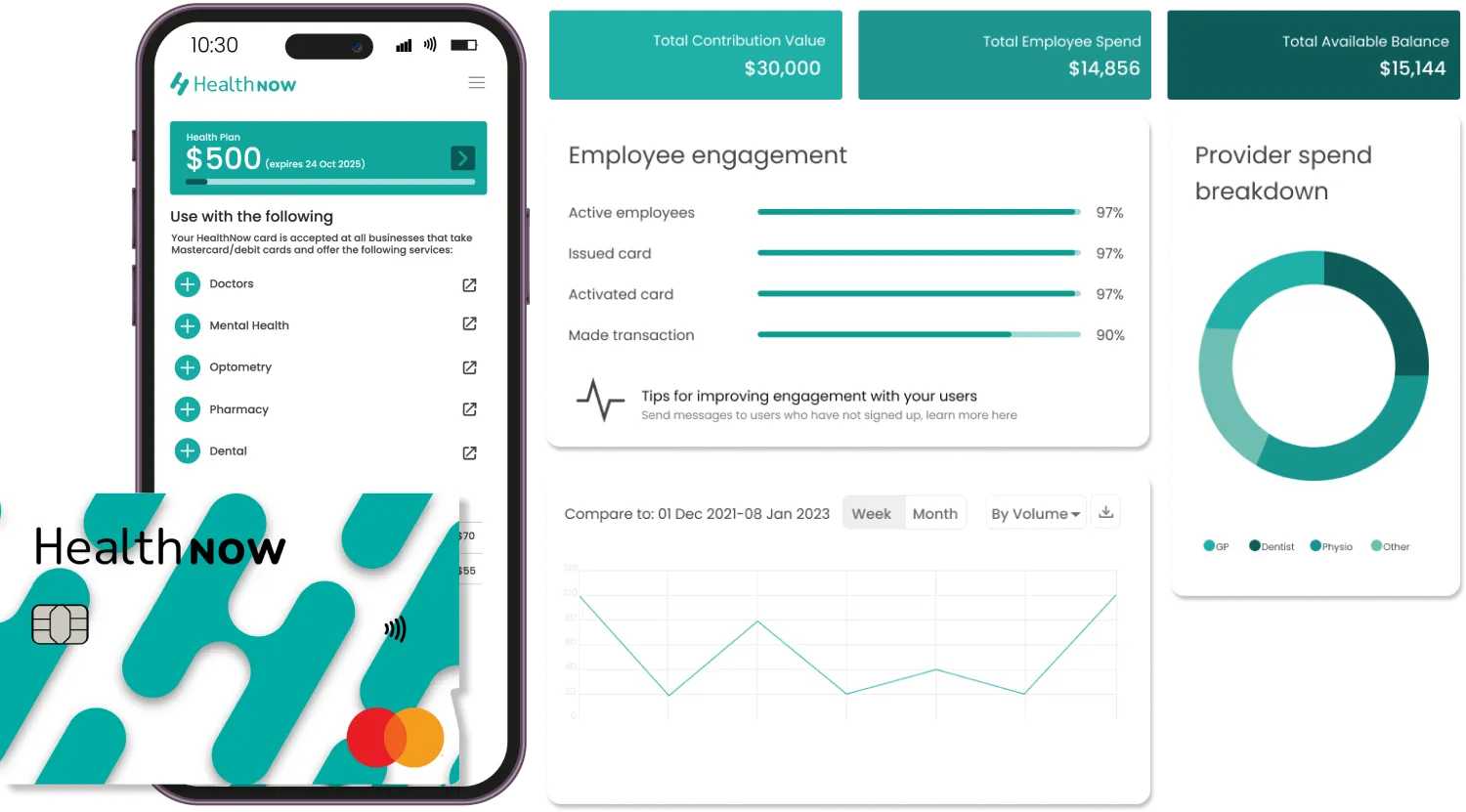Your employees’ workstation setup is a seemingly small yet incredibly powerful area that can greatly contribute to notable pain and injury. So much so, that workplace ergonomics is a focus area for many physiotherapists treating back pain, neck strains, repetitive strain injuries – and much more. For businesses, this can mean lost productivity hours and time taken off work.
Good workstation ergonomics paired with simple in-chair exercises are simple to implement and encourage, working to help prevent pain while keeping staff feeling comfortable throughout the day, which helps with their focus and concentration.
To help your business best support their employees’ health and wellbeing at work, here are five easy things you can implement or educate on that will help prevent problems, assist recovery from injuries, and set your team – and your business – up for long-term success.
Screen Position
Many workspaces utlise multiple screens, and their placement is often determined based on what fits in best with the desk space instead of what’s best for the body. When monitors are too low or high, it can strain the neck, shoulders and back.
To help, make adjustments to desks, such as with a monitor stand, that will help bring the employees’ monitor screen in line with their head. Include a chair with adjustable height so employees’ can make extra modifications themselves. Encourage your team to position their chair so that their eyes are in line with a point in the screen that is 5-10cm below the top edge of the monitor. This will help prevent them from looking too far up or down at their screen, excessively tilting their head upwards or craning their neck downwards. Also, encourage them to keep their screen a distance of 50cm-100cm (about an arm’s length) from their eyes.
Neck Exercises & Forearm Support
Neck pain, which diminishes productivity at work, has shown to affect as much as 82% of office workers. Neck pain most often occurs as a result of prolonged sitting, slouching and looking down. These movements compress the joints and strain the muscles at the neck, often being the starting point of ongoing pain.
To prevent and manage neck pain, individually prescribed and progressive neck exercise programs, completed for just twenty minutes three times per week, have shown great long-term results, including reducing the monetary value of productivity loss, and lower levels of pain and absenteeism 12 months after starting the program. This makes it a valuable long-term investment for both employees and organisations.
Encouraging your employees to keep their forearms parallel to their desk has also been associated with a reduction of strain on the muscles at the neck and shoulders, meaning less fatigue and tension. This can be achieved by having the keyboard close to the body so that the elbows are at 90-100º.
Promote Alternate Standing Desk Use
Standing desks have gained great popularity over the past decade as a ‘healthier’ alternative to sitting. However, standing for too long can also have negative consequences, with a higher prevalence of back pain in occupations that require standing. Educate your employees around:
- Standing for at least 2 hours per day cumulatively, optimally 4 hours per day
- Alternating regularly (eg 30-60 minutes) between sitting and standing
- Moving your neck left, right, up and down hourly to reduce stiffness
- Wearing comfortable, supportive shoes (not high heels)
Encourage Regular Breaks
Having your employees take a short break and a walk or a stretch at least every hour isn’t just beneficial for their muscles and circulation, but is also great for reducing the risk of repetitive strain injuries while supporting mental health and concentration. Employees that take regular breaks are shown to stay more productive and engaged, perform better, and very importantly, display reduced absenteeism and presenteeism.,
Support Proactive, Preventative Healthcare
While many of our suggestions are fantastic for prevention and optimisation, implementing ergonomic changes has no clear benefit to productivity for those who are already in pain, or are already injured. Efficient workplace ergonomics don’t work to repair injuries or strengthen weakened muscles as a result of the injury, though they may help to prevent the injury from progressing like it would with inefficient posture and movement.
This is where supporting your employees to treat any pains and problems as soon as they arise and while they are still mild can be of great benefit – before they have a chance to worsen and lead to time off work. Research shows that early access to physiotherapy for conditions like low back pain can have better results and greater improvement in aspects like perceived pain at 6 months compared to later access, as well as reducing the cost per episode of low back pain.
With overuse and repetitive strain injuries not being covered by ACC, many may be hesitant to seek health assistance with out-of-pocket costs, especially in the earlier stages where they may be hoping the problem will resolve on its own. This can unfortunately lead to months of pain, before a greater time off work must be taken to seek help.
This is where employer aid is setting kiwi businesses apart – by enabling employees to take proactive and preventative health measures in whichever way fits best. Employer aid sees your business put money that is allocated for employee wellness directly into each employees’ dedicated health wallet. Acting as an alternative to private health insurance, employer aid gives employees control and flexibility over how best to care for the health of themselves and their families. Moreover, offering employer aid is currently differentiating many businesses and positioning them as a preferred employer, in a time where finding new staff is growing incredibly challenging with a record low unemployment rate.
The employer aid platform is free for businesses, and onboarding is easy. Learn about the benefits of employer aid, and how you can easily start employer aid via a health wallet that can only be used on health-related products and services via HealthNow’s international platform here.
References
[1] https://www.sjweh.fi/show_abstract.php?abstract_id=3760&fullText=1#box-fullText
[2] https://thewellbeingthesis.org.uk/foundations-for-success/importance-of-taking-breaks-and-having-other-interests/
[3] https://design.org/the-science-behind-mental-health-breaks/
[4] https://pubmed.ncbi.nlm.nih.gov/20364055/
[5] https://journals.lww.com/clinicalpain/Abstract/2006/07000/Early_Access_to_Physical_Therapy_Treatment_for.1.aspx
[6] https://academic.oup.com/fampra/article/21/4/372/518010?login=true








